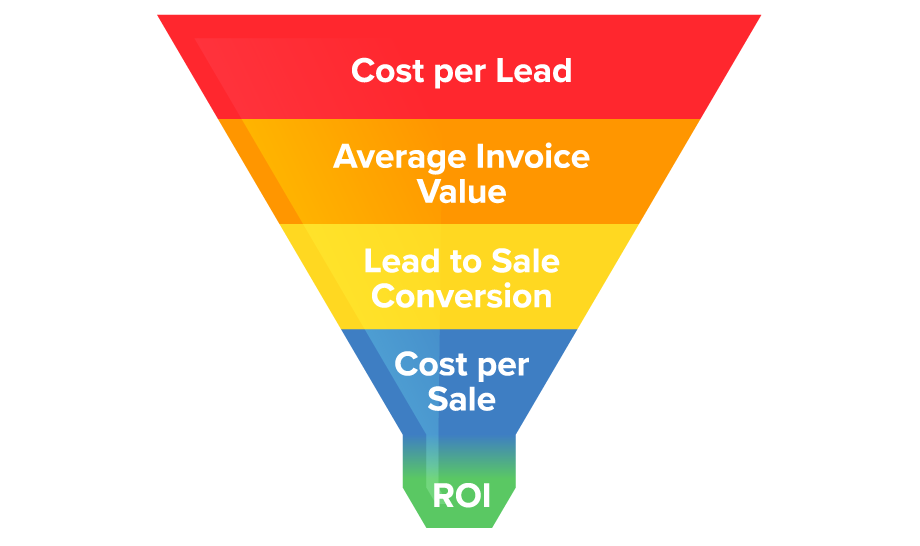How do I calculate my return on investment from sales leads? Mark Taylor, CEO of eSales Hub, takes you through a video giving an explanation on how you can quickly understand the performance of a sales lead using a return on investment model.
Video Transcription
Hi, my name is Mark Taylor from eSales Hub. Today I’m going to take you through how to calculate your return on investment from sale leads, or indeed any marketing channel.
How do I calculate my return on investment?
At eSales Hub we often get asked; “How do I calculate my return on investment from your leads?’ to “How do I know your leads are any good?”
I’d say it’s been one of the best things that I’ve used in my career at Hilton Hotels, Virgin and and Halfords was to establish the performance of all my different marketing channels so I could increase, decrease or modify different channels based on their return on investment.
This model doesn’t have to be used just for lead generation, it can be used for any marketing channel that you have.
To really work out what the financial performance is and actually how much money we generate for a client, here at eSales Hub we always establish what the return on investment needs to be for the campaign to be successful. We want to know that if the client is spending £1 with us, is £5, £10 or £20 the return back the clients needs for our leads to be profitable?
A lot of businesses have different margins, different profit ratios, and therefore the return on investment ratio really can be used to established if the source of leads, or in this case the leads from eSales Hub, are actually making any money for the client, or are they being a busy fools?
I’ve actually calculated and used a return investment model before that actually indicated we would have been better off spending the money elsewhere – it really can determine what your best channels are very quickly.
So how do you calculate a return in investment for your marketing or lead generation spend? Well, it actually takes just four key metrics to establish your return on investment. These are
Cost per Lead
Cost per Lead = Cost of Generating Leads / Total Leads Acquired
A lead is an individual that has expressed interest in your product or service.
You calculate your cost per lead dividing the total cost of your lead generation activity (e.g. Google Ads costs) by the amount of leads generated from that individual activity.
Average Invoice Value
Average Invoice Value = Total Sales Revenue / Number of Invoices
Average invoice value is a metric that allows you to understand fluctuations i sales revenue and profit at a glance
Lead to Sale Conversion
Lead to Sale Conversion = Total number of sales conversions / the total number of leads * 100
Lead to sale conversion rate is the percentage of leads that have become customers.
Cost per Sale
Cost per Sale = Lead costs / average invoice value
This metric is the amount an advertiser pays for each sale, generated by a specific activity and is a great metric for understanding profitability per transaction/invoice.
Return on Investment
Return on Investment = Cost per Sale / Average Invoice Value
For every £1 you spend, how much revenue are you generating back? Return on investment is a ratio between the average invoice and cost per sale.
To make things easier for you, we’ve created this simple working model for you to insert your cost per lead, average invoice value and lead to sale conversion, which the calculator below will then work out your cost per sale and your return on investment. You can enter any numbers you like, using it as much as a model for what you are producing today to forecasting the return on investment you’d like to get:
Return on Investment Calculator


Cost Per Sale
CPS
0
Return on Investment
ROI
0
By using this very simple model you can work out very clearly what’s high performing and and what’s low performing. You can then use this model to work out which are your best performing and worst performing sales channels.
Whether you are a small business, medium-sized or even if you a big business, sometimes you can kid yourself that all your sales channels are effective. Measuring different sources of sales is critical. When I was back at a Virgin Active I used spend a lot of time to really understand what worked not only from a national point of view, but locally too. I found that Bolton’s sales channels behave differently than Kingston upon Thames and it was really important to get that view so I could I could really tailor the marketing to being very specific to each location, making sure I didn’t waste valuable marketing budget.
You can also split your return on investment by new and existing customers. After all, you don’t want to be paying a fortune for returning customers, as you’ve already won them before.
You can start using the return in investment model today as it will set a baseline for your business. You might also discover some improvements in performance that can dramatically improve your return on investment. How can I improve the sales conversion? Is it sales training? How can I improve the average order value? Do I need to upsell customers better? Is there a specific product that is driving a higher average order value? The more you use the return on investment model as a granular piece of data analysis for different customer types and products, the more value you will get out of it.
If you’d like help producing an ROI model for your business or want to discuss how you can improve your return on investment, do contact us on the number above or set-up a free account with eSales Hub. We’d be delighted to help and have a chat through your return on investment and what could be done to improve it.




